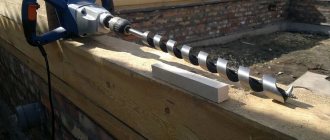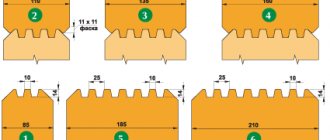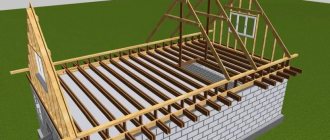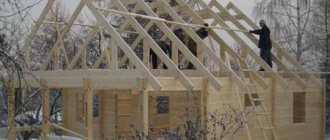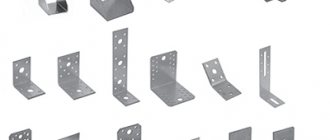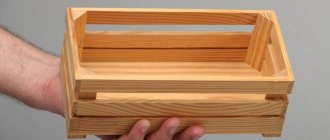A circular saw is a universal tool for cutting all kinds of parts and elements. To carve wood with this tool, you need to familiarize yourself with some rules that will make the work easier and help you safely cut the object into small parts. 5 tips on how to properly cut wood with a circular saw will greatly simplify your renovation task.
Circular saw machine
- A machine table can be made in many ways, even from an ordinary kitchen table. The main thing that needs to be achieved is the durability and strength of the structure.
- The working tool is a disk. It should extend beyond the table by a maximum of one third of its diameter. It is best used for processing workpieces less than 150 mm thick, otherwise such a machine is unlikely to be suitable.
- Shafts and gears. The best solution is to install a ready-made shaft under the tool, since the manufacture of the shaft requires special equipment and skills to avoid errors and equipment failure. The V-belt drive will ensure greater safety and smooth operation.
- Motor. Among circular motors, the drive from a washing machine with its high efficiency and longer service life enjoys constant success.
In conclusion, let’s say that a homemade circular saw is capable of solving a fairly wide range of household tasks.
The optimal and easy-to-execute option is to make a jointer and a circular saw on the same bed. Plus, both tools will rotate from the same electric motor. This feature will greatly facilitate our task. Its design will not necessarily be complicated, the main thing is to think through all the details, make drawings, and carry out proper assembly. Attention! To avoid injury, always follow safety precautions!
Have a nice work!
Construction of door and window openings
In a log bathhouse, openings for windows and doors are made in two ways. The first is after the construction of the bathhouse is completed. After shrinking the structure in the right places, openings of the required size are cut out using a chainsaw. The first and last logs are cut to 1⁄2, which will subsequently facilitate the process of trimming. This method is applicable to simple and rounded logs. If the bathhouse is made of laminated veneer lumber, then be careful because of the possible chipping and peeling of the glued boards.
Second option. Openings for windows and doors are cut out in the log during the set of bathhouse crowns, at intervals of 3–4 crowns. This is done to prevent possible extrusion of the crowns. After the construction of the log house is completed, these “crossbars” are removed.
The first method does not require any special costs and is simple to set up, so it is most often used in practice. When making window and door openings in a chopped bath, do not forget to make a frame to protect them from distortion. The casing is carried out in the form of a prefabricated frame.
How to lay parquet boards: methods and technology for proper installation of parquet boards
One of the main advantages of parquet boards is that they do not require additional processing after installation. The material is sanded, scraped, varnished and other operations are carried out in the factory, so all that remains for the consumer to do after purchase is to correctly lay the boards on the subfloor. Thanks to a convenient locking system, installation technology is noticeably simplified, but in order to create a high-quality and durable floor covering, you need to study all the intricacies of this process.
Floating method
Laying of the covering is carried out without fixing the parquet board to the rough base. The lamellas are attached to each other using a tongue-and-groove system or a special locking connection. A small gap must be left around the perimeter of the room to prevent the floor from deforming during thermal expansion. There is a layer of waterproofing between the coating and the base; noise-absorbing materials can also be laid.
This method is considered the most convenient and fastest, therefore it is used by most craftsmen, and is also ideal for those who do not yet have construction experience. If the installation technology is followed, the coating can withstand changes in humidity and temperature, which means that the risk of deformation is reduced to zero. If individual slats are damaged, replacing them will not be difficult; the main thing is to choose the right boards based on tone and pattern. Complete dismantling of the coating will also not require much effort; in addition, the material can be reused.
Laying parquet boards using the floating method
Features of the work
Since independent work on cutting longitudinal grooves is impractical (it is much easier to purchase a tongue-and-groove beam, this will save you a lot of time and effort), we will look at how to make slots for partitions, frames, etc. There are several options, choose the one that is more convenient for you.
Tenon-groove-tenon timber is one of the most popular and sought after options among developers
Using a hand router
This tool is very suitable for DIY work for the following reasons:
The device is very simple and easy to use and can be used even by those who have never performed such work. The main thing is that the kit contains instructions; from it you will learn how to prepare the equipment for work and how to use it correctly to achieve the desired result;
You can make a groove of various shapes, the main thing is to purchase a cutter of the desired configuration
What is important is that the work is carried out in one pass, additional refinement is not required as in other cases, and the quality of the groove is very high;
A correctly selected cutter will help you easily achieve the desired result.
The kit always comes with a stop, this will save you from the question of how to cut a groove in a beam exactly, the tool will go at the same distance from the edge, which means the cut will be even. The most important thing is to set up the device correctly before work; then you won’t have to be distracted by it.
Before selecting a groove in the timber, move the stop to the required distance
Hand-held circular saws
Very mobile equipment that can be used for cutting elements of small thickness; it is also often used for the purposes discussed in our article, this is due to the following factors:
Equipment mobility – parquet floors weigh little and have compact dimensions, making them easy to move to the right place and cut even in limited space;
Mobility is the main advantage of this option
The workflow is simple - you mark the future grooves, and then cut along the lines
The depth is limited by the offset of the disc, remember this factor;
After you have made the cuts, you need to use a hammer and chisel to remove the excess and level the cut, this is very important.
Working with a chainsaw
This type of tool is available at all sites where structures made of wooden beams are erected, so it can be used for our purposes.
Let's look at how to cut a groove in a beam with this tool:
First of all, you need to mark the future groove, and it is more convenient to work on elements that lie on a horizontal surface at a height of about 1 meter. If the work is done in this way, then mark the depth so as not to cut too much;
It is important to cut the timber to the required depth
- Some do the job entirely with a chainsaw, and some prefer to remove the cut piece with a wood chisel;
- If you need to cut a groove for a partition on an already installed wall, then you need to draw lines that will be the main guidelines and cut along them. Proceed carefully, try to maintain the same depth along the entire length; in extreme cases, you can then trim individual sections.
How to safely cut small pieces using a circular saw
For carpenters, boards and beams are the most common blanks, from which crafts and wood products are subsequently produced. And the first thing the material undergoes is sawing into pieces of the required length. At the same time, you should know how to saw off a board evenly, because performing this operation incorrectly can ruin the workpiece or significantly affect the appearance, and not for the better.
For carpenters, boards and beams are the most common blanks, from which crafts and wood products are subsequently produced. And the first thing the material undergoes is sawing into pieces of the required length. At the same time, you should know how to saw off a board evenly, because performing this operation incorrectly can ruin the workpiece or significantly affect the appearance, and not for the better.
At large enterprises, the problem of how to saw off a beam or board evenly does not arise. Any serious production facility has high-precision equipment that performs this type of work. At home you have to make do with what you have on hand. At the same time, you still need to be able to use the tool or equipment correctly in order to saw off the board correctly, and the cut turns out without flaws.
Note that many enterprises that sell boards and timber provide cutting services. And for this they use the same specialized equipment, so the purchased material will be cut with high quality. But it is not always possible to use such a service, and it often happens that only one piece to be cut
Stationary machine with your own hands
To perform everyday or one-time tasks, a hand-made circular saw is quite suitable. Small-volume sawing work does not imply heavy loads on the disk drive. The compact tool has small dimensions, which makes it possible to put it away after finishing work in a certain place. An experienced carpenter will need to make a large stationary type circular saw.
Circulation table
The main condition for making a table is the selected material. It is recommended to use a solid steel sheet, duralumin or silumin alloy. Materials such as moisture-resistant plywood, plexiglass and textolite require processing and installation on top of a galvanized sheet. The use of any material in manufacturing must meet the main conditions:
- increased vibration resistance;
- sagging with a load exceeding 50-60 kg is unacceptable;
- the presence of a perfectly flat surface.
In cases where the conditions are not met, a DIY circular saw may stop due to a jammed disk or a broken drive. The consequences can be different, from a damaged part to injury to a person.
There are several options for making a circular table. Stationary tables can be sawed or made from two parts. The circular saw blade should protrude no more than a third of its diameter.
Saw blade
Saw blade
The design of a DIY circular saw must contain a saw blade. The working surface of the disk is set to one third of the total diameter. For example, with a diameter of 210 mm, the disk should protrude 70 mm from the table. Parts with greater thickness will require a powerful motor, from 1 kW. A miniature circular saw will not cope with such tasks.
The splitting knife installed on some models serves to prevent short circuits and jamming during operation. It is located at the back a few millimeters from the teeth of the saw blade. The device may also be needed when making a circular saw with your own hands.
Adjustable side support
Any type of work will require a stop. The side support is made of a block of dense wood. In other cases, it is possible to make it from a metal corner. The arrangement should be slightly longer than the table structure. The stop is installed using bolts. The template is installed between the table and the cutter for precise installation and better settings.
Shaft
Homemade shaft
The most important part of the design is the shaft mounted on the circular saw. A self-made shaft for a circular saw can damage the structure and cause injury. The reason for this is runout, which cannot be avoided when making a shaft using artisanal methods. The manufacture of the shaft should be entrusted to a specialist with good turning equipment. You should remember that there is a cutter that needs a seat. The holes must be symmetrically machined and machined.
Finished shafts are sold in specialized markets. Preference should be given to parts with a self-aligning bearing. Otherwise, the conventional mechanism may soon render the circular machine unusable.
Broadcast
There are several types of gears that can be used in the design of a DIY circular saw:
- V-belt transmission;
- mechanism consisting of gears.
The preferred option is to use a belt drive. Using a mechanism with gears can lead to jamming if a foreign body enters and injury to the worker. When choosing the pulley diameter, the maximum number of revolutions of the saw blade is taken into account.
Motor
Electric motor for circular saw
In most cases, homemade machines are equipped with an engine from an old washing machine. The main features are increased service life and efficiency. The speed of such engines is not high, which makes working on a circular saw assembled with your own hands safer, longer, and has a positive effect on the result. The use of a special three-phase motor implies the presence of a 380 Volt network. If one is not available, you will have to use a starting and running capacitor, which leads to additional costs.
Guide rail
For cutting large and long sheet lumber on the table, a long DIY circular saw guide bar will be useful.
The basis in this case is an (8–10 mm) plywood strip with a length exceeding the dimensions of the sheet being cut. The tire itself can be wooden (a block 15–20 mm thick) or metal from a U-shaped profile. The tire is attached to the base with glue or screws. On one side of it there should be a narrow edge of the base, sufficient for fastening to the sheet with clamps. On the other side, the first cut is made with a saw along the base. After this, the edge of the base will exactly coincide with the passage of the circular disk. When working, it is combined with the markings on the sheet, the stop is secured and the sheet is sawed.
Is it possible to fasten without cuts?
The rafters are fixed without preliminary cutting using a rigid or sliding method. The sliding method gives one of the ends of the rafter system a certain degree of freedom. Rigid - provides for complete fastening of the rafters without any possibility of temperature shifts.
Sliding fastening of the rafters to the rest of the roof base is also done in open and closed ways. The closed method involves the use of a corner with an eyelet in the form of a slot. The corner is fixed to the Mauerlat, and a steel component with holes is inserted into the slot. Using these holes, the corner is fixed to the rafter. It can move, relieving the wall from deformation.
There are several ways to rigidly fasten rafters. On a single- or multi-slope roof, the rafters are secured with corners or LK parts. LK parts are suitable for any rafter size, they are made of 3 mm steel, which allows you to firmly grip the roof elements. For a saw-free connection, angles are used that differ from those used in saw-off joints - the flanges are designed for more powerful screws and a larger number of them.
The sawless unit is also used in the complete absence of a mauerlat - floor beams are used instead. The number of paired rafters of a gable roof is equal to the number of these beams. This method is good for completely wooden buildings built from logs or timber.
To learn how to cut rafters at the desired angle, see the following video.
Methods for laying parquet boards
The coating can be laid in three ways - adhesive, floating and using fasteners (nails, self-tapping screws).
Laying with fasteners
Fixing the parquet board with nails or self-tapping screws can be used in the case of laying the covering on logs or a solid wooden base, and not on a screed. Slats with a thickness of at least 20 mm are suitable for this, since thin boards can be easily damaged. The logs are laid in increments of no more than 60 cm and strictly in the same plane, since even small differences in height cause squeaks when walking. The space under the flooring must be well ventilated to avoid the accumulation of condensation and dampness.
When laying, the lamellas are positioned so that their ends meet only at the joists. The nails are driven into the grooves at an angle, and the heads are deepened with a hammer so that the fasteners do not interfere with the tight fit of adjacent boards. Such fasteners provide the necessary strength of the connection, but make it difficult to subsequently replace elements during repairs. If complete dismantling becomes necessary, the coating cannot be reused due to damaged edges.
To fasten individual parquet strips, nails are used, the length of which is 40 mm and the thickness is 1.6 - 1.8 mm
Description of equipment
DIY circular saws can be stationary or portable. The design of the simplest circular saw will include a metal or wooden supporting frame, inside of which are mounted an electric motor, an electricity supply control unit, a table top and the working saw itself, which is mounted on the circular saw shaft or installed through gears and a trunnion mechanism. The saw is located in a slot in the tabletop, which makes it easy to cut lumber, performing high-quality wood processing.
The table top can be made from lumber or you can use ready-made metal blanks for this. Smooth easel tables are made from wood; the top of such a table top will need to be covered with a durable metal sheet. Otherwise, without metal protection, the wood will begin to wear out quickly, and the equipment will last several years during active use, after which complex and expensive repairs will be required.
Some models imply the presence of an additional shaft to which knives, a jointer and a plane are attached. Such universal machines are equipped with powerful electric motors, which allows you to perform a wide range of wood processing work. When manufacturing a multifunctional machine, it is necessary to be guided by high-quality diagrams and drawings that will allow you to create universal and reliable equipment.
If you need to perform various types of carpentry work, then set up a coordinate table with guides. The existing stops and guides can be fixed at different angles, which allows not only to ensure safe operation of the machine, but also to perform high-quality wood processing, easily changing blades to saws of different diameters.
How to make homemade accessories for a circular saw?
Materials and tools you will need:
- Textolite or plywood.
- Screws with countersunk heads.
- Support bars.
- Clamps.
- Double-sided tape.
- Hardboard.
- Silicone spray.
- Aluminum corners.
- Paraffin.
- Fiberboard.
Making a guide
A plywood sheet that has factory edges that are even in length can be used to make a guide bar. To do this, you need to cut a strip from the sheet with a width equal to the maximum possible width of the circular saw. You need to add 20 cm to the resulting value. The length of this sheet should be slightly greater than the maximum length of the material.
First of all, you need to retreat 6-7 cm from the factory edge on the prepared piece of plywood and cut off the strip. This strip will be the ruler along which the bed of a saw of this type will move. The part of the cut sheet of plywood that remains will serve as the base on which the ruler will be fixed. The saw moves along the ruler during the cutting process.
It is important to ensure that the height of the ruler is equal to the thickness of the saw bed
Circular saw assembly diagram.
Next you will need to install the ruler on the base. It is fixed at a distance of 10 cm from the edge. The distance may be smaller, but it should be sufficient to use clamps.
The factory edge must be directed in the direction where cutting will be done. The guide is glued to the base and additionally secured with screws.
Finally, you need to remove the excess part of the base. This can be done by using a circular saw. The finished edge on the base will be the same length as the edge of the plywood sheet on the ruler.
This guide is very easy to work with. The base with a ruler is fixed on a workpiece, for example, on chipboard. You can secure using several options. In the first method, the part of the sheet to be cut will be located on the side of the saw blade, in the second method - under the base on which the guide ruler is fixed.
Along the length of the sheet, 2 marks are made on the side that corresponds to the specified cutting methods, at the distance where the cut is located. The distance between marks should be maximum
In this case, it is important to take into account the thickness of the disk. The base of the ruler is installed using two marks and secured with clamps. The depth of the clamp jaws should ensure their installation so that at the end of the cut the saw can freely extend beyond the sheet
If the guide ruler is long, then making a transverse cut is not very convenient. Therefore, it is advisable to make a structure that will have a shorter length. For example, for cabinets that are 60 cm wide, you will need to make a guide 1 m long.
Such devices are only suitable for working with materials that have a large width and length. It is impossible to cut the board into even beams of this design.
Designs for a circular saw that will help you make precise cuts
If a saw blade of this type leaves torn fibers and chips on the edges of the cut, then you can try to make a structure to obtain a zero gap. You will need to cut a piece of hardboard that is 6 mm thick. Next, you need to remove the disk, lift the protective casing and glue the cut piece to the base. This can be done by using double-sided tape. Next, the saw is turned on and the disc is slowly immersed in hardboard so that it is possible to obtain a cut with zero clearance.
You can also make a special template. If you make a template, you can make precise cuts anywhere. The design is intended for boards 15 cm wide, but it is not difficult to adjust the device to any size or angle.
https://youtube.com/watch?v=7sWCaSTCox8
The structure is made with a small allowance, after which the saw is pressed against the stop and the edge of the base is removed to the final length. The distant edge of the structure determines the line along which a saw of this type will make a cut. A mark is placed on the board in the place where it needs to be sawed off. Next, you need to press the lower stop of the product against the edge of the material and align the edge of the base with the cut mark. By passing the tool through the structure, it will be possible to cut boards with high precision.
Required tools and materials
First, the material for the working surface of the table is selected. Most often these are plywood or chipboards, or other types of wood material. After installation, they require additional processing to protect them from moisture and subsequent destruction. Some craftsmen also use metal; such a table will be stronger and more reliable. But you shouldn’t use plastics in this matter, they are not suitable for such purposes.
So, to build a homemade table for a circular saw, you will need:
- Work surface material. If wood is used, then carpenters recommend choosing an option with a thickness of 20 mm or more.
- Timber for frame construction. In most cases, wood is used. You need to prepare 5 bars.
- Wooden dowels for fastening. It's better to take a spare, they are inexpensive.
- Metal fastenings. Minimum – 4 pcs.
- Metal corners. 10 pieces.
- Self-tapping bolts.
All materials must be purchased in advance and left at the place of work, so that later you do not have to run to the store again.
Of course, you can’t make a table with your bare hands. Ideally, you need to have the following set of tools:
- For measurements and drawings (tape measure, ruler, pencil, marker).
- For cutting (electric jigsaw).
- For processing wood (milling machine, plane, sander, fine-grained sandpaper).
- For fastening (drill, screwdriver).
Homemade devices
Making a circular saw is not that difficult; problems may arise when fitting the components. Choosing all the elements correctly so that they work flawlessly is an important task. The shaft must have self-adjusting bearings if the unit is used daily. It is best to select the bearings themselves with two rows of balls, which will be adjusted using a clamping nut.
The working surface must have a “grid” marking. Without this coordinate system, accurate woodworking is quite difficult. The protective casing must not be neglected - during operation it reliably protects the device from mechanical damage. A circular saw operates in different modes when working with different materials, so it is advisable to have a device that controls such a process. Several grooves should be made on the shaft so that it is possible to rearrange the pulleys, thus changing the speed.
When you have to saw bars or make several cuts from different directions, you need a stop that has a “P” configuration. At its base lies a board 30 mm thick. Sidewalls 12 mm thick are screwed to the base. Thus, the emphasis is installed on a beam, the size of which from the cutting point corresponds to the size of the cutting disc. On both sides it is pressed against the beam with clamps. If the beam is too massive, then it is rearranged and another cut is made.
There is also an edge stop that is in demand. To make it requires a lot of time and good qualifications of the craftsman. Be sure to make a diagram before starting work. This stop is made from plywood (20 mm), and the stop strip is also made from this material. Manufacturing phases:
- longitudinal grooves for keys are cut;
- the keys are mounted on a thrust strip;
- Another groove is cut between the grooves made to secure the thrust strip;
- another hole is made in the base, its size corresponds to the saw blade of a circular saw;
Sidewalls-limiters are mounted, and there must be clamps in order to securely fasten them. To place the emphasis on the workpiece, the bar moves in the grooves and is fixed through the slot with clamps. It is best to immediately attach a ruler or tape measure to the frame - this makes the work much easier. The pusher is convenient for working with small workpieces - it allows you to fasten the part on both sides, which ensures precision in work
It is also important to do:
- elevator;
- riving knife;
- lifting mechanism.
Capacitors are calculated according to the following scheme: per 1000 watts there are 100 uF for a working type capacitor. The capacity of the starting capacitor must be ordered twice as large. It should be remembered that the SB starting block is a device that automatically returns to its original position. This is very convenient, since literally a few seconds after the start you can begin the workflow.
Why does a jigsaw cut crookedly?
The saw blade leaving the pre-planned line may be due to several reasons. The operator may not have enough experience in handling the tool, the file may be defective, and the rod and guide roller for the jigsaw may have serious play. In order not to guess from the coffee grounds, it is worth starting to sift out the factors that determine the accuracy and evenness of the cut line in your individual case.
As usual, it’s better to start with yourself and your approach to sawing. Often, novice craftsmen rush things and, wanting to speed up the cutting, apply a lot of pressure to the jigsaw. The tool does not have time to bite evenly into the material and create a clear groove for the file, which begins to follow the path of least resistance and makes unpredictable movements. This problem is especially common when working with thick timber (from 40 mm) and varnished plywood from Soviet times.
This is one of the reasons why the jigsaw moves to the side. What to do about this? The answer is obvious. Apply the minimum pressure sufficient to guide the tool along the line and set the maximum number of revolutions (when working with wood). The pendulum mode usually does not affect the evenness of the cut if its design is in good order.
The quality of assembly and wear of tool parts can be a good reason for the formation of beveled lines when sawing. There are basically no complaints about devices from the budget segment (up to 2,500 rubles), as well as hopes for their conscientious assembly. It’s another matter when original, branded instruments begin to perform such tricks. Often, the cause of a crooked cut is the guide roller, the jigsaw rod or its sole.
You can check the reliability of the element’s fixation by simply tugging it with your hand. Loosening of the rod or roller by more than 1 mm determines that this device is not capable of producing a perfectly even cut. The more play there is in the parts, the less accurate the cutting line they form. This problem should be corrected based on the circumstances. If the part itself is worn out, it can be replaced with a similar one. It is difficult to fix a breakdown if the attachment point to the mechanism is worn out. Not every modern Kulibin undertakes such repairs, and this problem is usually solved by purchasing a new tool.
Unfortunately, the products of many trusted brands are often counterfeited, and jigsaw files are very popular in this regard. It so happens that low-quality and counterfeit products have a rather short service life, which brings many problems to the owner. One of these problems is a crooked cut. An initially smooth blade can bend due to poor-quality metal, which can cause deformation of the tooth set, if it was present at all. In this regard, if your jigsaw cuts crookedly, replacing the saw blade can correct the situation. The process of choosing a high-quality jigsaw file was discussed in detail in a separate topic.
Extension with composite rafters
There is another very interesting way to connect and increase the length of the rafters: extension using two boards. They are sewn to the side planes of the extended single element. Between the extended parts there remains a gap equal to the width of the top board.
The gap is filled with scraps of equal thickness, installed at intervals of no more than 7 × h, where h is the thickness of the board being extended. The length of spacer bars inserted into the lumen is at least 2 × h.
Extension using two extension boards is suitable for the following situations:
- The construction of a layered system along two side girders, which serve as a support for the location of the joining area of the main board with the attached elements.
- Installation of a diagonal rafter that defines the inclined edge of hip and half-hip structures.
- Construction of sloping roofs. The strapping of the lower tier of rafters is used as a support for the connection.
Calculation of fasteners, fixation of spacer bars and connection of boards is carried out by analogy with the methods described above. For the manufacture of spacer bars, trimmings from the main lumber are suitable. As a result of installing these liners, the strength of the prefabricated rafter significantly increases. Despite the significant savings in material, it works like a solid beam.
Varieties
Modern experts distinguish the following types of hacksaws:
- necessary for cutting wood. With its help you can work with logs, boards, chipboard leaves. The process is simple, a person with minimal knowledge in this area can handle it;
- capable of sawing metal products. A narrow and thin file with fine teeth is attached to the C-shaped frame. To make it convenient to work with the tool, there is a special handle made of rubberized or plastic material;
- working with concrete. The teeth, unlike other types, are larger.
The wood saw is easy to use and lasts a long time. The choice of tool must be made depending on the size of the board. You need to pay close attention to the length of the teeth. A saw with teeth equal to 3.5 mm can cut soft wood perfectly. To cut hard wood products, you should take a hacksaw with a tooth size of 5 mm. Be sure to sharpen the tool before cutting.
Attaching the rafters to the mauerlat
Correct fastening of the rafters to the ridge beam and to the mauerlat is an indispensable condition for professionally performed roof installation.
To install the rafters to the Mauerlat, one of two types of coupling is used:
- sliding;
- hard.
The choice depends on the shape of the roof and its structural features, and accordingly on which rafters are chosen - layered or hanging.
The rigid method assumes that the connection of the rafters and the Mauerlat is carried out in such a way that the possibility of rotations, shifts, bends, and torsions between these two elements is excluded (read: “How and how to attach the rafters to the Mauerlat”).
To achieve this result, you can use one of the following methods:
- using corners for fastening rafters and supporting frame beams;
- by making a gash on the rafter leg and further securing the connection with nails, staples and wire.
As for the second method, it is used more often than the first. It provides that nails are nailed from the sides at an angle towards each other (as a result they intersect inside the Mauerlat). After this, the third nail is driven vertically. The resulting fastening points for the rafter structure provide high rigidity (read also: “Rafter fastening points - structural elements”).
Additionally, both connection methods are secured by fastening the rafters to a brick or concrete wall using rolled wire and anchors. Prepare the rafters for installation if they have the same angle of inclination throughout the roof by using a template.
Installation of the rafter system, details in the video:
A sliding connection, also called a hinged connection, is achieved by creating a special fastener that allows one of the mating elements to move freely within specified limits. In this particular case, such a part is the rafter leg, and it will move in relation to the mauerlat.
There are the following methods for installing rafters to the mauerlat, providing offset:
- with the help of sawing and subsequent laying of the rafters, the place was washed on the mauerlat;
- by driving two nails diagonally from the sides in the direction one to the other;
- connection using one nail, which is nailed in a vertical position from top to bottom through the rafter leg into the mauerlat. An alternative is to use rafter fastening plates that have holes for nails;
- fastening method using a bracket;
- by extending the rafter leg beyond the wall using single plate fastening;
- by using steel fasteners specially designed for rafters, which are called “sleds”.
All the described methods, on the one hand, make it possible for the rafter leg to rest against the Mauerlat, and on the other hand, if the structure moves, its elements can move relative to each other.
The sliding type is found quite often in the construction of houses; this connection of rafters and mauerlat is especially popular when arranging wooden houses that are built from logs or timber. Over time, the original geometry of the structure is distorted as the walls shrink and the use of rigid joints leads to the integrity of the walls being damaged. Attaching the rafters to the frame using a sliding connection allows the log walls, gables and other elements of the building to adjust to shrinkage.
It is also not possible to rigidly fasten the rafters in the ridge. The entire structure is assembled first on the ground. Before installing the rafters for the roof, measurements are taken, cut-outs are cut into the mauerlat and rafter legs, and then a careful adjustment is made.
Types of working attachments
Sawing logs with a chainsaw is carried out in different ways; craftsmen work with wood along the grain, as well as across it. It all depends on what attachments are used in the chainsaw.
Attachment for longitudinal sawing
It is used for sawing logs lengthwise, the process takes place in a horizontal position. After work, the master receives the same thickness of the product. The finished materials undergo a drying process, after which the boards are used in construction.
In appearance, the device is a small frame; it is attached to the tire on each side.
Device for longitudinal cutting of logs
Sawing with a lightweight attachment
The method is not very productive, but is used quite often. The element is fastened on one side, but the workpieces are slightly uneven. Such materials are necessary for the construction of sheds or fences.
Drum debarker – debarker
Chainsaw attachment for removing bark
With the help of such an attachment it is easy to dissolve the log; it works due to a V-belt drive. Attached to belts on both sides, special pulleys are used for this. The speed of rotation of the shaft depends on the size of the pulleys, so the performance of the attachment is easy to change.
This technology forces the master to carefully monitor each stage of the process; some specialists use an assistant during this cutting. But this option requires increased security measures.
Overview of some options
We will tell you about the two most popular designs that provide the best quality when working, and you yourself will determine which is more convenient and preferable in your case.
Homemade option
First, let's look at how to make a device for sawing logs with a chainsaw with your own hands.
The instructions for carrying out the work are as follows:
- It is best to use a frame from an old school desk or a square pipe with a side of 20x20 or slightly larger.
- First of all, two clamps are made, these are elements 50-60 cm long, at one end of which a crossbar with two holes for tightening bolts and a small protrusion in the middle for clamping the tire is welded, an element of the same configuration is attached on top, the photo below shows ready-made elements, as you can see, everything is quite simple, and if you have a welding machine on hand, you can make them very quickly.
The clamps should be sized so that the width of the bolts is slightly greater than the height of the bar
- To longitudinally saw a log with a chainsaw, you need a support frame, the width of which should be 7-8 centimeters less than the length, two elements 10 cm long are welded perpendicular to two of the sides, they should be a little larger so that the clamps fit into them, you need install two fixing bolts; for this, a hole is drilled and nuts are welded in order to screw the fasteners into them; a handle is welded in the middle for ease of movement.
- The system is assembled in the following way: first, the clamps are inserted into the grooves, after which the chainsaw bar is inserted and carefully fixed. The distance is selected depending on the thickness at which sawing needs to be done. To understand how this is done, look at the photo, which shows the assembled structure, the price of the issue is several metal elements and rental of welding for an hour.
This is what the device looks like after assembly
Now we’ll tell you how to cut a log into boards with a chainsaw using this design:
- You will need two sawhorses to serve as supports, they should be of such a height as to ensure ease of work.
- A reliable metal strip or durable board is best suited as a guide. You can make this element from a corner or other metal products.
- A log is placed below, which needs to be set to the desired height, after which work can begin. After the first pass, the log is raised to the desired height and the process is repeated.
The work is quite simple, the main thing is to set everything accurately and fix it securely
Important! Do not forget that to operate a chainsaw, a chain for longitudinal cutting of wooden products must be installed; this will ensure high speed and high-quality sawing
Ready solution
The Big Mill Timberjig option is very popular; it is a special kit for equipping a mini sawmill. Sawing logs into boards with a chainsaw using this device is simple and effective.
By purchasing this option, you get everything you need; we’ll tell you how to organize the cutting of logs:
The design is very well thought out and is simple and reliable.
- First you need to connect two strong and even boards together, as a result you should get a T-shaped structure. This will be a stubborn ruler.
- Next, make two L-shaped stops; the delivery set includes corners that are designed specifically for these purposes.
- Roll up the log and place it on comfortable and reliable bars. Attach supports to its ends with self-tapping screws; you should not use nails, since they are much more difficult to remove later.
- Next, a ruler is attached to the installed wooden supports; this is done using clamps, which are also included in the kit, remember that the cut line does not go along the edge of the guide, but 10 millimeters higher.
- Before cutting a log into boards with a chainsaw, we recommend raising one side by about 30 degrees, this will make it much more convenient to work. Fix this position with the help of two supports; if something is not clear to you in the description, look at the photo, everything is shown clearly on it, in addition, the kit always comes with instructions with detailed diagrams.
How to cut a log into planks with a chainsaw? This device allows you to do this easily and quickly
You can cut logs or beams into boards without a sawmill or other massive equipment; an ordinary chainsaw, after a little modernization, can become your best assistant. The video in this article will help you understand this topic even better.
Setting the stop
To accurately guide the board when sawing, we prefer to use a rip fence, which allows us to saw thin sheets of the same thickness over and over again. If your machine was not equipped with such a stop, you can purchase it separately, make it yourself according to the drawings, or simply attach a straight board with a height of at least 75 mm to the saw table with clamps.
By setting the stop parallel to the saw blade and perpendicular to the edge of the saw table, make sure that there is no so-called drift, when the cut deviates to one side or the other from the intended direction. To do this, run a straight line in the middle of the cutting board parallel to the left edge. Pressing the left edge against the longitudinal stop, cut the trim lengthwise , starting to cut along the mowing line.
If the saw blade tends to drift, the fence will need to be adjusted to compensate for the drift, as shown in the pictures below, to achieve clean cuts. Once you adjust the rip fence to compensate for drift, you won't have to do it again until the next saw blade change.
